A red tilapia cage farming business in the Mekong Delta
In 2023, Vietnam’s tilapia production was a mere 200,000 tonnes, but the government aims to reach 400,000 tonnes in 2030 from 40,000ha of ponds and 1.8 million m3 of cages.
The Ministry of Agriculture and Rural Development (MARD) planned for 45-50% of the production to be exported as tilapia fillets and value-added products. There is a relatively large domestic market where the preference is live or chilled fish of 600g to 1kg, the latter size for hotpot meals (AAP, 2021).
According to VASEP, the country’s exports of frozen tilapia in 2023 reached more than USD6 million, while it was USD 8 million in 2022. The primary market was the European Union. Vietnamese tilapia in the US is difficult to compete with Chinese tilapia because Vietnam’s average price is much higher, even though it is on a downward trend.
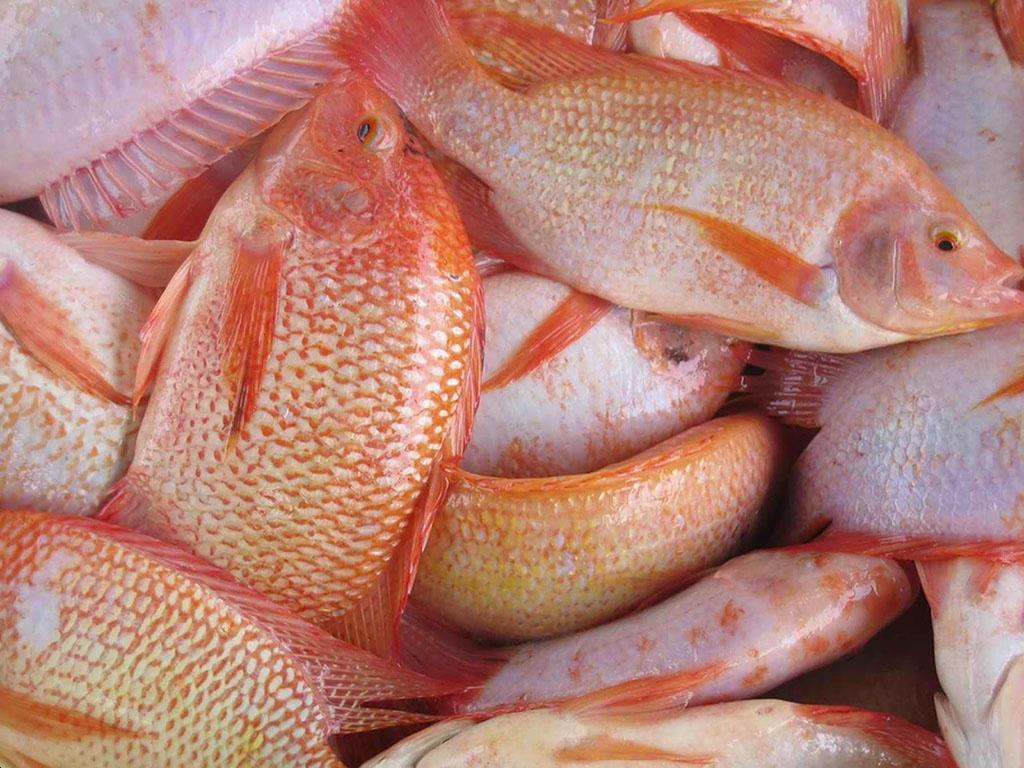
A cyclic demand and supply
Like other freshwater fish, farmgate prices for the tilapia follow the cyclic demand and supply trend. On March 22, during a visit to his cages, farmer Tran Van Sieng said the farmgate price of tilapia, sadly, was only VND33,000/kg (USD1.28), whereas the cost of production was VND39,000/kg (USD1.52). The lower price for the red tilapia was caused by competition with snakehead fish. There was also an oversupply of tilapia with new entrants in the farming business. Existing farmers have also invested in more intensive farming methods.
However, on June 18, red tilapia farmgate price rose to VND43,000/kg (USD1.69). According to Truong Song, Sales Manager, Uni President Vietnam (UPVN), this upward trend was due to a reduction in culture area to 30-40% resulting in a lower supply.
He added that in distribution channels, fish prices are higher in major cities. For example, from this farmgate price of VND43,000/kg (USD1.69), in local commune markets, it is VND60,000/kg (USD2.36) and in district markets, it rises to VND70,000/kg (USD2.75). In Ho Chi Minh City, prices reach VND80,000-90,000/kg (USD3.15-3.54) for top grade tilapia and sizes are over one kg.
Tilapia in floating cages
In the Mekong Delta, almost all of red tilapia farming are in cages. Song added that in Chau Doc in An Giang Province, which borders Cambodia, there is culture of black tilapia in cages to sell into the Cambodian market. Black tilapia is cultured in ponds in north Vietnam, stocking at low density (4-5 fish/m2). In the Mekong Delta, farmers also culture black tilapia in shrimp ponds.
The tributaries in the Mekong Delta are where most of the farming of red tilapia in floating cages is located. There are 2,000 cages in the Tien River, Binh Thanh Island, Dong Thap province. Sieng, is also a feed distributor for UPVN and distributes feeds to 100-120 of these cages. Sieng himself has 10 cages. In Vietnam, it is not unusual for a farmer to be a feed distributor and vice versa.
Sieng said, “I stock mixed-sex tilapia since I found out that the growth rate of monosex tilapia reared by another farmer has low survival. The survival in my cages is around 50-60%, but with monosex tilapia, it is very low at 30%.”
Song explained that monosex tilapia grows faster and has a shorter culture period by a month, which means that in 5 months fish reach harvest sizes. In contrast, mixed sex black or red tilapia takes 6-7 months. The shorter cycle is an advantage when fish prices are high, and the farmer can harvest quickly. However, when fish prices are low, farmers tend to keep fish in cages longer to wait for higher prices.
Red tilapia fry comes from a land-based hatchery in Tien Giang. A group of independent farmers pool to buy fry and nurse them over 2-3 months to fingerlings of size 40-50/kg or 20-25g/fish for stocking. Sieng buys fingerlings from this group to stock into his cages. UPVN markets tilapia feeds containing 35% to 27% crude protein for red and black tilapia, starting for fish sizes of 5-15g to a harvest size of 600g and more. Feed costs VND18,200/kg (USD0.71) for 30% crude protein feed. The recommended feeding rate is 3-4 times per day for the early stages and 2-3 times per day for larger sizes.
When his feed conversion ratio (FCR) is 1.8-1.9 and sometimes goes up to 2, Sieng says that his production cost is higher than the farmgate price for his tilapia. However, Sieng believes that the high FCR has to do with weather conditions. Hot weather affects fish appetite. Song explained that the most favourable weather conditions for tilapia farming in Dong Thap is from May to October when the water flow is fast and dissolved oxygen (DO) levels are higher. FCR is 1.6-1.7 and with monosex tilapia, FCR is better at 1.5 and survival rate high at 60-70%. From November to May, the water flow is low coupled with low DO levels. This is when FCRs are poor and survival rates are low at 50-60%.
There are also disease challenges. Farmers term these as red gill and red gut disease. The pathogens for gill necrosis are Flavobacterium columnare; and for skin haemorrhages, Streptococcus agalactiae and Aeromonas hydrophila. There are no laboratories for diagnostic tests in the area, and farmers resort to pharmaceutical laboratories to confirm the bacterial pathogens affecting their fish.
The farming model
The most popular cage size is 5mx11mx3m deep. Other floating cage sizes are 6mx12m, 5mx10m and 4cmx8cm with 3m depths. The stocking density will depend on the size of fingerlings but the range is 80-120 fish/m3.
In the case of monosex tilapia, farmers stock 600kg of fingerlings at size 30-40/kg in 5mx11mx3m cages. This is about 18,000-19,000 fingerlings. Song added that for mixed sex tilapia, farmers buy smaller fingerling (size 60-70/kg) and they nurse them in cages for one month to reach size 20/kg before transferring to larger cages of 5mx11mx3m. The total biomass is 900kg of about 18,000-19,000 fish. The acceptable survival rate is more than 60% and harvests reach 8-9 tonnes.
At the time of the visit, Sieng operated only six out of his ten cages. This is because in March, fish prices were low. Song said that is usual for farmers to temporality stop culturing and wait for better prices and continue farming. In July, Sieng had begun operating all 10 cages.
For each cycle, the fingerlings cost VND32,000/kg. Since Sieng stocks 700kg of fingerlings per cage, his total cost is VND22.4 million (USD881,000). The harvest was 7-8 tonnes per cage at an average body weight of 600-700g. There is a one-time harvest for each cage. The red tilapia is sold live through buyers for the live fish markets and restaurants in Ho Chi Minh City.
After six months of rearing in the cages, in a mixed-sex population, there can be a range of sizes. In 6 months, harvest sizes range from 300g to 1.3kg and the average size is 600g/fish. Due to the unsteady demand and low prices, Sieng is putting his expansion plans on hold.
Aquaculture Asia Pacific


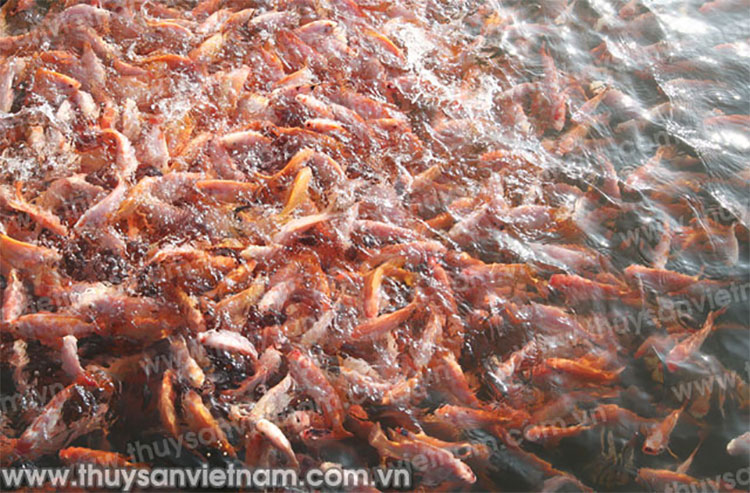
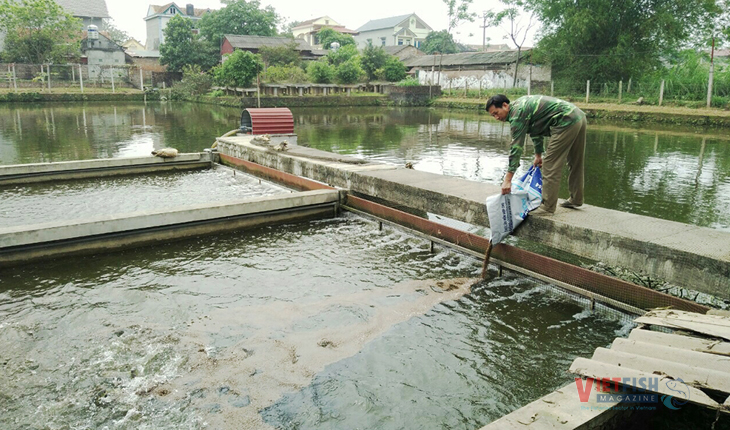
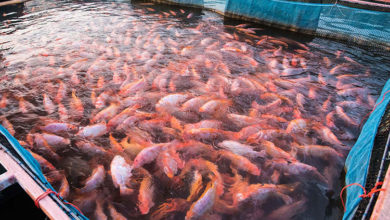
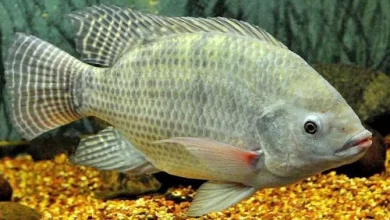
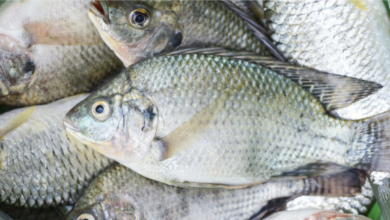
thanks for the great article, keep up the good work
Bagus isi bacaannya,